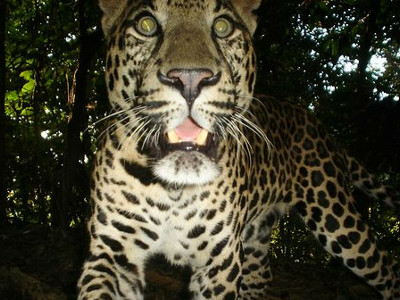Report that chimpanzees and gorillas in the natural world are working together

Decades of research have revealed that chimpanzees and gorillas form long-term social relationships between different species, such as eating together in the same tree.
Interspecific interactions between sympatric apes: iScience

Study reports first evidence of social relationships between chimpanzees, gorillas - The Source - Washington University in St. Louis
https://source.wustl.edu/2022/09/study-reports-first-evidence-of-social-relationships-between-chimpanzees-gorillas/
Chimps And Gorillas Seen Hanging Together In The Wild, And We Wish We Were Invited : ScienceAlert
https://www.sciencealert.com/chimps-and-gorillas-seen-hanging-together-in-the-wild-and-we-wish-we-were-invited
This was revealed by a team of primatologist Cricket M. Sands and others at the University of Washington. Mr. Sands and his colleagues have been observing and researching apes for over 20 years in the forests of Nualeva-Ndoki National Park in Congo.
One of the possible reasons why different species like chimpanzees and gorillas get along well is 'measures against predators'. In fact, there are predators such as leopards and snakes in Nualeva-Ndoki National Park, and there have been cases of chimpanzees being killed by leopards. It was suggested that it was not particularly connected to reducing the threat.
Instead, 'enhancement of foraging opportunities' is considered as a strong reason. Of the observed cooperative relationships between chimpanzees and gorillas, 34% were ``eating together in the same tree'' and 18% were ``eating different foods nearby''. Chimpanzees and gorillas feed on at least 20 plant species.
It was also observed that young gorillas and chimpanzees were playing in the trees, which are food sources, looking for specific partners. 'We can no longer assume that the social landscape of individual apes is fully occupied by their species,' said study co-author Jake Funkhouser of the University of Washington. The strength and persistence of inter-species relationships indicate a previously unimaginable depth of social awareness and breadth of social communication channels. 'Given that it can serve as a pathway for both positive cultural behaviors and harmful infectious diseases, the insights gained in this study are very important.'
Poaching, habitat loss, and disease transmission are major threats to apes. As Funkhauser noted, interspecies communication carries the risk of transmitting disease. Since chimpanzees and gorillas are closely related, the same disease may spread, and in the past, Ebola hemorrhagic fever killed one-third of the world's chimpanzees and gorillas. Until now, it was thought that apes would avoid each other because of the risk of transmitting the disease, but this study has greatly overturned that assumption.
Others see the coexistence of great apes as an opportunity to learn about early hominin interactions. Paleoanthropology has hypothesized that early hominins competitively excluded each other from using the same resources in the same area, but in permissive social conditions they could have coexisted, as in our study. gender can be considered.
Sands emphasized the continued importance of longitudinal studies, not only for understanding the behavior and ecology of chimpanzees and gorillas, but also for protecting these apes and their habitats.
Related Posts:
in Creature, Posted by logc_nt







